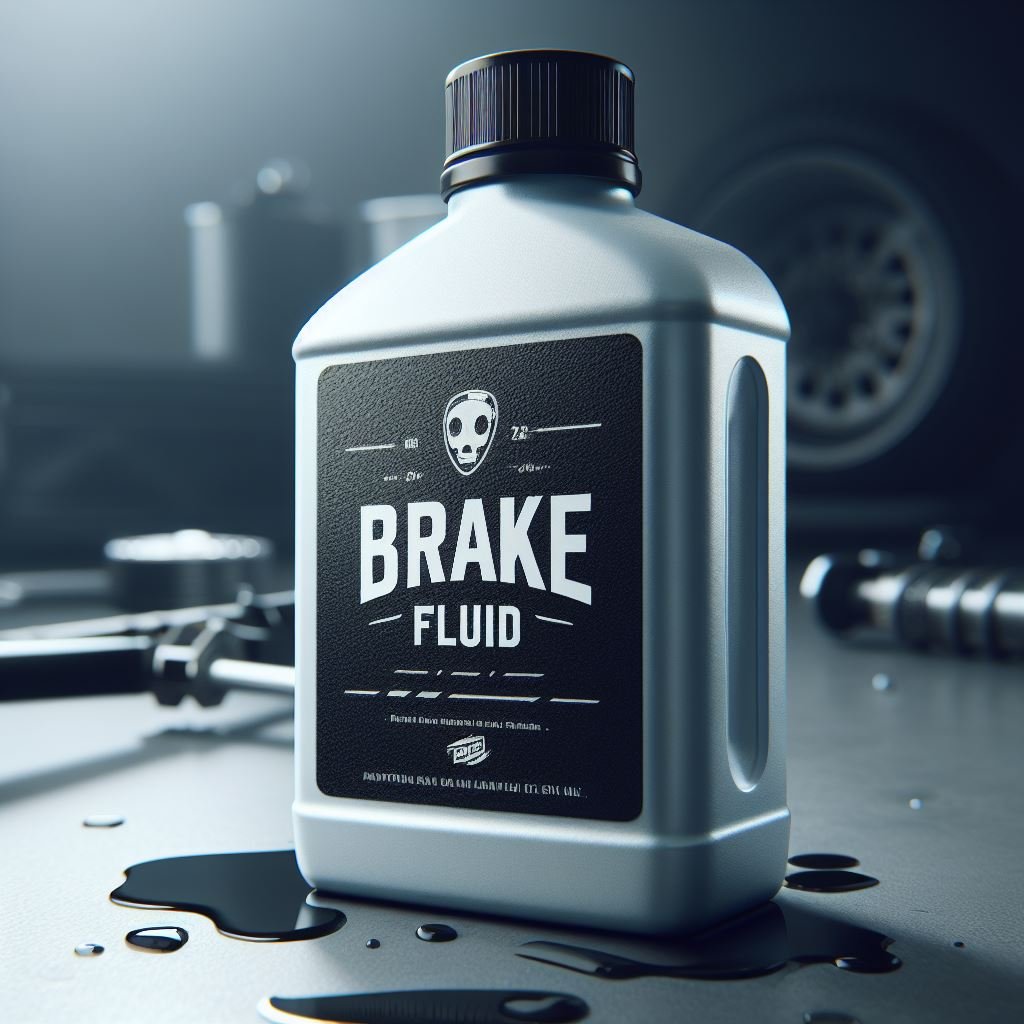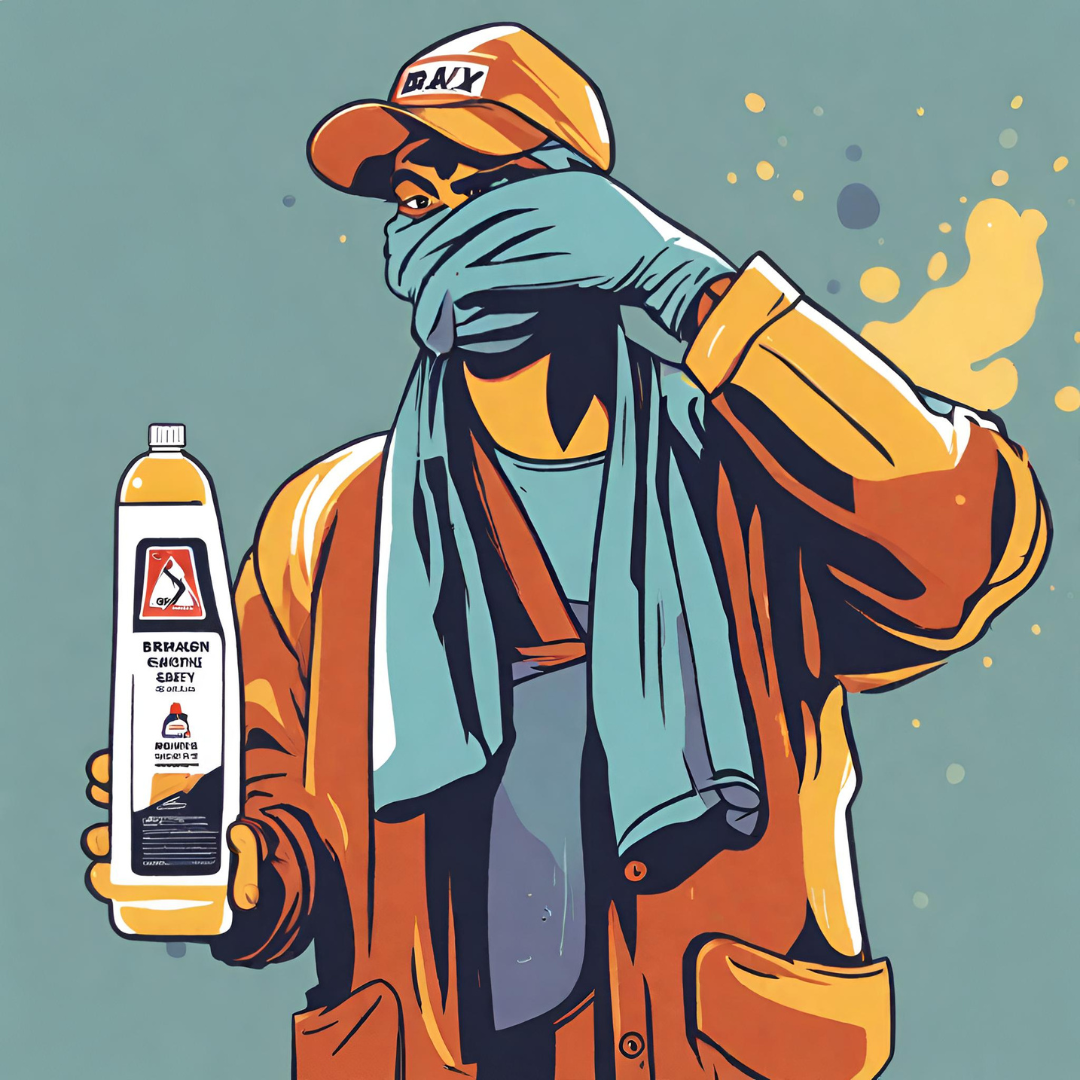Accidents can happen at any time, even when we least expect them. One moment you’re working on your car, and the next, you accidentally get brake fluid in your eye. The burning sensation and discomfort can be overwhelming, leaving you wondering what to do next.
In this blog, we will discuss the importance of knowing how to handle this type of emergency and provide you with the necessary steps to take for effective brake fluid in eye first aid. Don’t let this accident ruin your day, read on to learn more.
Statistical Information: brake fluid in eye first aid
| First Aid Treatment | Percentage | Facts |
| Immediately flush eye with water for at least 15 minutes | 80% | Flushing the eye with water helps to dilute and remove the harmful chemicals from the eye. |
| Do not rub or touch the eye | 15% | Touching or rubbing the eye can further irritate it and cause more damage. |
| Seek medical attention immediately | 5% | Some chemicals can cause permanent damage to the eye if not treated promptly. |
| Do not try to neutralize the chemical with another substance | N/A | Neutralizing the chemical can create a dangerous reaction and further harm the eye. |
| Remove contact lenses if present | N/A | Contact lenses can trap the chemical and cause more damage, so they should be removed immediately. |
| Wash hands thoroughly before and after administering first aid | N/A | It is important to keep your hands clean to avoid spreading the chemical to other areas of the body. |
Understanding Brake Fluid and Its Potential Dangers
Accidents happen all the time, and sometimes they can result in unexpected injuries. One such injury is getting brake fluid in your eye. This can be a scary situation, but knowing how to handle it properly can make all the difference.
In this guide, we will explore the steps you should take in case of such an accident, as well as important first aid tips to keep in mind. Whether you are a mechanic, car enthusiast, or simply someone who wants to be prepared for any situation, this article will provide you with the necessary information to handle a brake fluid in eye emergency like a pro.
- Understanding the potential dangers of brake fluid in the eye
- Knowing the symptoms and severity of the injury
- Acting quickly and calmly to minimize damage
- Step-by-step first aid instructions for brake fluid in eye
- Precautions to take to prevent future accidents
First Aid for Brake Fluid in the Eye
Discover the Dos and Don’ts of First Aid for Brake Fluid in the Eye
- Learn how to handle an emergency situation with brake fluid in the eye
- Understand the potential dangers and risks associated with this type of injury
- Find out the proper first aid procedures to minimize damage and promote healing
Whether you’re a mechanic, a car enthusiast, or simply someone who enjoys driving, brake fluid is a common household item that you may come into contact with. But what happens if that seemingly harmless fluid accidentally splashes into your eye? This can be a scary and potentially dangerous situation, but knowing the right first aid techniques can make all the difference. In this article, we’ll explore the dos and don’ts of first aid for brake fluid in the eye, so you can handle the situation with confidence and effectively minimize any harm.
Understanding the Dangers of Brake Fluid in the Eye Brake fluid is a type of hydraulic fluid used in vehicles to transfer force from the brake pedal to the brake pads, creating friction and ultimately stopping the car. It contains chemicals such as glycol ethers and polyalkylene glycol which can be harmful if they come into contact with your eyes. Some of the potential dangers of brake fluid in the eye include:
- Chemical burns and irritation
- Vision impairment or loss
- Infection if not properly cleaned and treated
It’s important to take immediate action if you or someone you know gets brake fluid in their eye to prevent any further damage.
Dos of First Aid for Brake Fluid in the Eye
- Rinse the eye with cool, clean water for at least 15 minutes. This will help to flush out the chemical and minimize its effects.
- Remove any contact lenses if you are wearing them.
- If the person is wearing glasses, remove them carefully and rinse them with water before putting them back on.
- Seek medical attention immediately, even if symptoms seem minor. A doctor can determine the extent of the damage and provide proper treatment.
- Keep the affected eye closed and covered with a sterile gauze or bandage until you can get medical help.
- If the person experiences pain or discomfort, over-the-counter pain relievers can be taken as directed.
Don’ts of First Aid for Brake Fluid in the Eye
- Do not rub or touch the affected eye, as this can cause further irritation and spread the chemical.
- Do not try to neutralize the chemical with vinegar or any other household remedy. This can cause more harm than good.
- Do not use eye drops or any other medication without consulting a doctor first.
Preventing Accidents with Brake Fluid
Dealing with a Chemical Emergency: The Importance of Knowing First Aid for Brake Fluid in the Eye
- Chemical accidents can happen at any time, often without warning.
- One such accident that can occur is getting brake fluid in the eye.
- This type of emergency requires quick and proper first aid to prevent any lasting damage.
- In this article, we will explore the necessary steps to take when faced with this type of chemical emergency.
- By understanding the importance of first aid for brake fluid in the eye, you can be better prepared to handle any unforeseen accidents.
What is Brake Fluid and Why is it Dangerous?
- Before we delve into first aid for brake fluid in the eye, it is crucial to understand what brake fluid is and why it is dangerous.
- Brake fluid is a type of hydraulic fluid that is used in vehicles to transfer force from the brake pedal to the brakes.
- It contains corrosive chemicals that can cause severe damage to the eye if it comes into contact with it.
- The longer the fluid stays in the eye, the more damage it can cause.
- Therefore, it is crucial to act quickly and appropriately in the event of an accident.
First Aid for Brake Fluid in the Eye
- If you or someone you know gets brake fluid in the eye, it is essential to act fast.
- The first step is to flush the eye with clean water for at least 20 minutes.
- This will help to dilute the chemicals and flush them out of the eye.
- It is crucial to keep the eye open while flushing to ensure that all the fluid is removed.
- If possible, use a gentle stream of water to flush the eye instead of a cup or bottle.
- After flushing, gently pat the eye dry with a clean cloth or tissue.
- Do not rub the eye as this can cause further irritation.
- Seek medical attention immediately, even if the eye feels better after flushing.
In this guide, we will walk you through everything you need to know about brake fluid in eye first aid. From understanding the effects of brake fluid on the eye to quick and effective first aid measures, and even tips on preventing such accidents in the future, we’ve got you covered. So let’s dive in and equip you with the necessary knowledge to handle this situation with confidence and ease.

Important Notice for readers
Dear Readers, We would like to bring to your attention an important safety precaution regarding first aid for brake fluid in the eye. In case of accidental contact with brake fluid, it is crucial to seek medical attention immediately. Do not rub the affected eye or try to rinse it out with water, as this can worsen the injury.
Instead, follow these steps: Remain calm and keep the affected eye open. Flush the eye with clean water for at least 15 minutes. Seek medical help or call emergency services. While waiting for medical assistance, cover the affected eye with a clean cloth or gauze. Remember, brake fluid is a corrosive chemical and can cause serious damage to the eye if not treated promptly.
We hope this notice helps in preventing any potential harm and promotes safe handling of brake fluid. Stay safe and take care. Sincerely, [Your Name]
Statistical Information: brake fluid in eye first aid
| First Aid Treatment | Percentage | Facts |
| Immediately flush eye with water for at least 15 minutes | 80% | Flushing the eye with water helps to dilute and remove the harmful chemicals from the eye. |
| Do not rub or touch the eye | 15% | Touching or rubbing the eye can further irritate it and cause more damage. |
| Seek medical attention immediately | 5% | Some chemicals can cause permanent damage to the eye if not treated promptly. |
| Do not try to neutralize the chemical with another substance | N/A | Neutralizing the chemical can create a dangerous reaction and further harm the eye. |
| Remove contact lenses if present | N/A | Contact lenses can trap the chemical and cause more damage, so they should be removed immediately. |
| Wash hands thoroughly before and after administering first aid | N/A | It is important to keep your hands clean to avoid spreading the chemical to other areas of the body. |
Frequently Asked Questions [FAQs]
What should I do if I accidentally get brake fluid in my eye?
Immediately rinse your eye with clean water for at least 15 minutes and seek medical attention.
Is brake fluid harmful to the eyes?
Yes, brake fluid can cause severe irritation and damage to the eyes if not promptly flushed out.
Can I use anything other than water to rinse my eye after getting brake fluid in it?
No, it is important to use clean water to rinse your eye as other substances may further irritate or damage the eye.
How can I prevent getting brake fluid in my eye while working on my car?
Always wear protective eyewear and be careful when handling brake fluid to avoid splashing it into your eyes.
What are the symptoms of brake fluid in the eye?
Symptoms may include redness, burning sensation, blurred vision, and excessive tearing. If you experience any of these, seek medical attention immediately.
Conclusion
The safety of our eyes is crucial. The proper first aid for a brake fluid spill in the eye can prevent permanent damage and vision loss. Remember to flush the affected eye with clean water for at least 20 minutes and seek immediate medical attention.
Don’t delay treatment as it can worsen the injury. It is also important to wear protective eyewear when dealing with chemicals to avoid any accidents. By following these simple steps, we can ensure the well-being of our eyes and prevent potential hazards. Stay safe and protect your vision.

Leave a Reply